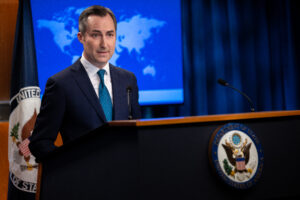Drug-resistant tuberculosis tightening grip in Bangladesh
DHAKA, Bangladesh (AA) – Nine-month-old Nayma is being given a high dose of drugs under the careful watch of physicians at a health center in Bangladesh capital Dhaka.
She has been diagnosed with a deadly drug-resistant form of tuberculosis.
Nayma has been provided treatment for the last three months for MultiDrug Resistant Tuberculosis, or MDR-TB, a highly infectious form she contracted from her mother.
Her doctor, Shakil Ahmed, said that Nayma was doing well and has recovered but that she has been kept at the treatment center because her drug schedule has yet to be completed.
“We have to strictly and closely monitor patients’ diagnosis of MDR-TB as it needs special care and caution as the drugs we use in the treatment can cause serious side effects. The MDR-TB also needs an additional treatment period,” he said.
TB is a leading cause of mortality and morbidity in children. Despite intensive efforts to diagnose and manage childhood TB in Bangladesh, detection rates are below 5%, according to the International Centre for Diarrhoeal Disease Research, Bangladesh (ICDDR, B), which published a study earlier this month that was supported by the USAID agency and the Alliance for Combating TB in Bangladesh.
Ahmed, who is also the Director of the Mycobacterial Disease Control (MBDC) of Directorate General of Health Services (DGHS), lamented that his agency is facing a challenge in detecting MDR-TB and getting treatment, including for child patients.
“There are some 30,000 susceptive child MDR-TB cases in Bangladesh every year but we hardly detect 10,000 to 12,000 cases,” said Ahmed.
MDR-TB growing public health concern
Tuberculosis is a highly infectious disease that can infect 10 people from a single carrier, according to experts.
It exposes those who have compromised immunity, including lung disease, coronavirus and kidney disease.
When tuberculosis is not neutralized by two or more antibiotics drugs out of the four that are available, it is called MDR-TB, according to chest disease specialist Sadia Sultana Reshma.
Senior tuberculosis mitigation and coordination adviser Azharul Islam Khan has said that Bangladesh has 121 deaths from TB every day — a number that is quite high and means the disease is at a crisis stage.
Patients diagnosed with tuberculosis need precise treatment under an authorized physician and a long recovery period. But some patients do not follow strict guidelines and discontinue their medicine schedule.
“In such cases, drug-sensitive TB turns into a drug-resistant one which not only makes the patient vulnerable further but the patient’s family members or members of the same household becomes exposed to the deadly variant of the disease,” said Khan.
More people live in rural Bangladesh where they expose others to tuberculosis. Bangladesh is ranked seventh from the bottom country in the world for tuberculosis infections, he added.
Social stigma remains barrier to screening, treatment
Prevailing social stigma has caused would-be patients to forego screenings after they had already developed symptoms or an infection.
The recovery period can last six to 18 months, leaving patients worried about their jobs and the social stigma associated with the disease.
But Reshma said those factors should not deter patients from getting treatment.
“Patients need to be isolated during treatment as TB is highly infectious. Many patients lost jobs, social barriers cause disruptions in getting treatment and female patients get stigmatized at in-laws’ homes due to the prevailing misconception in the society,” she said.
Bangladesh will need to raise awareness at the community level and community leaders have a role to remove the social stigma apart from a strong political will to fight misconceptions and stigmas, according to Khan.










